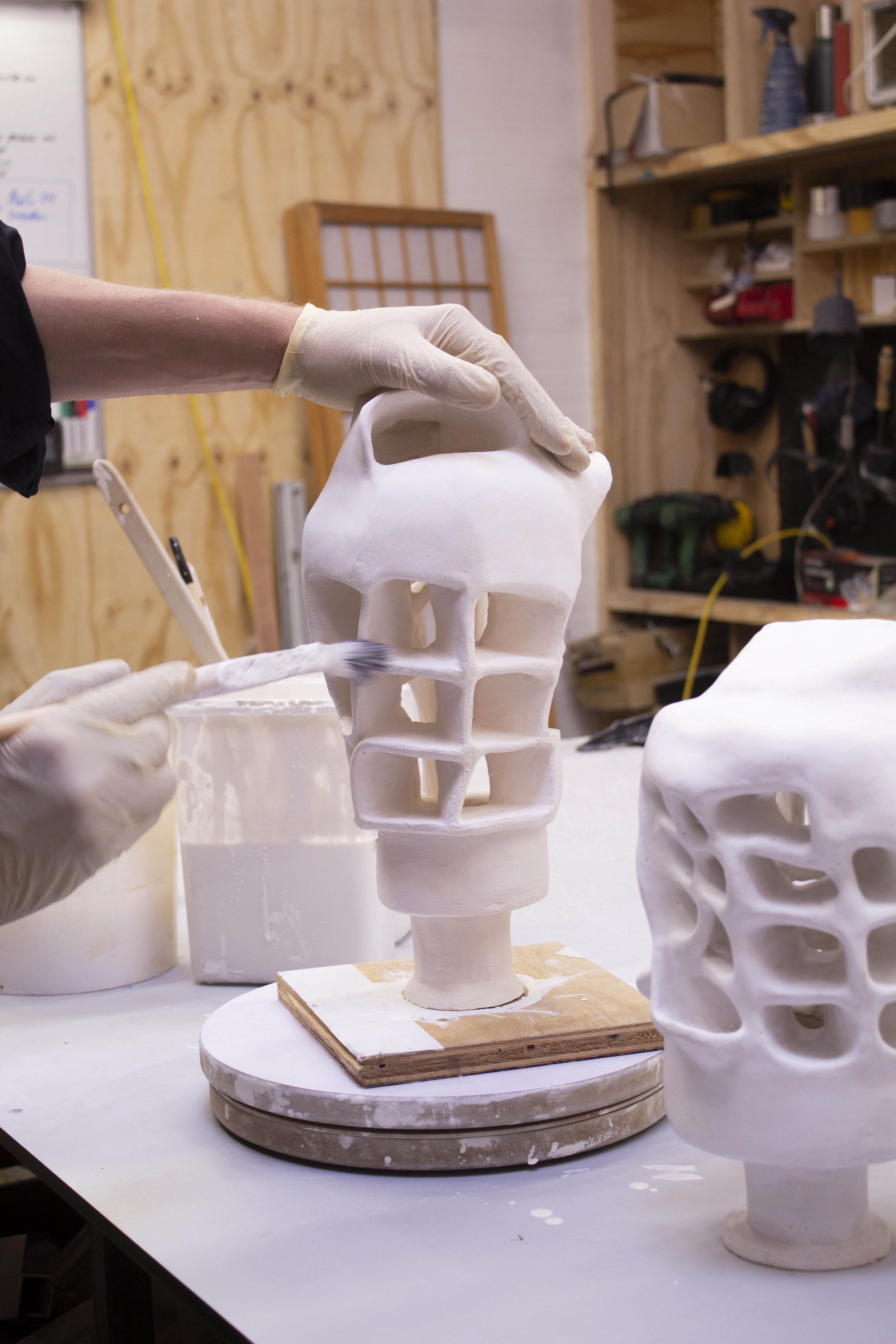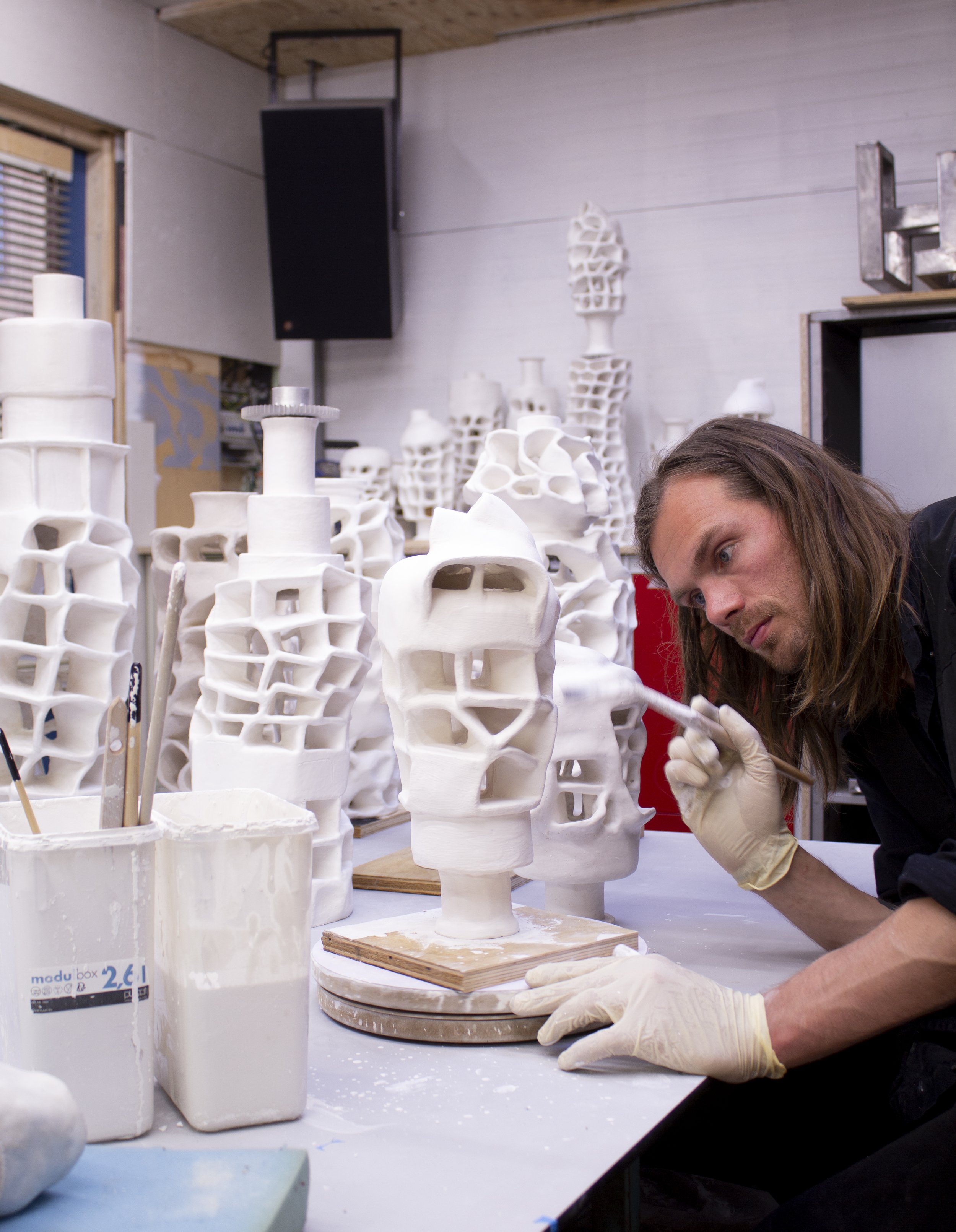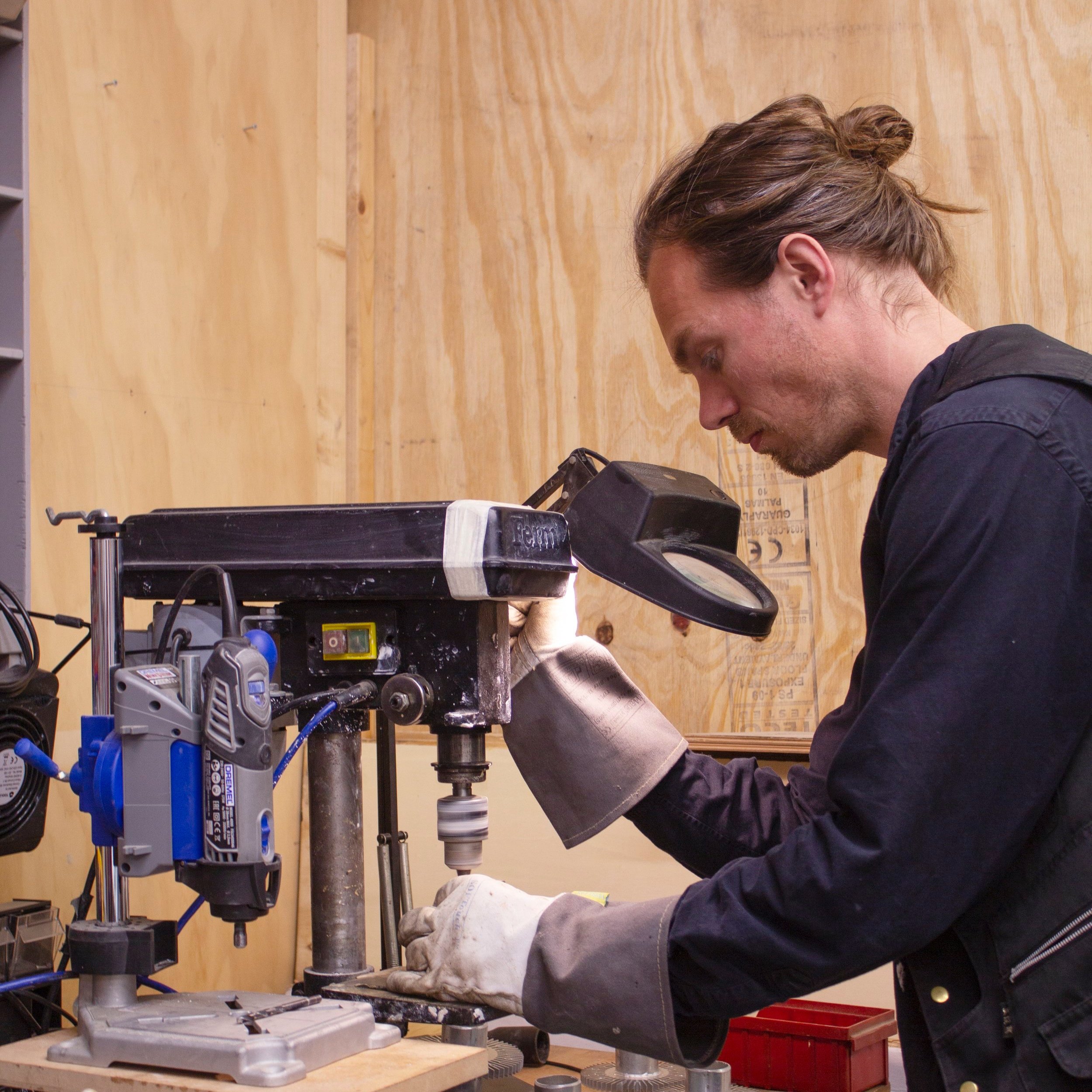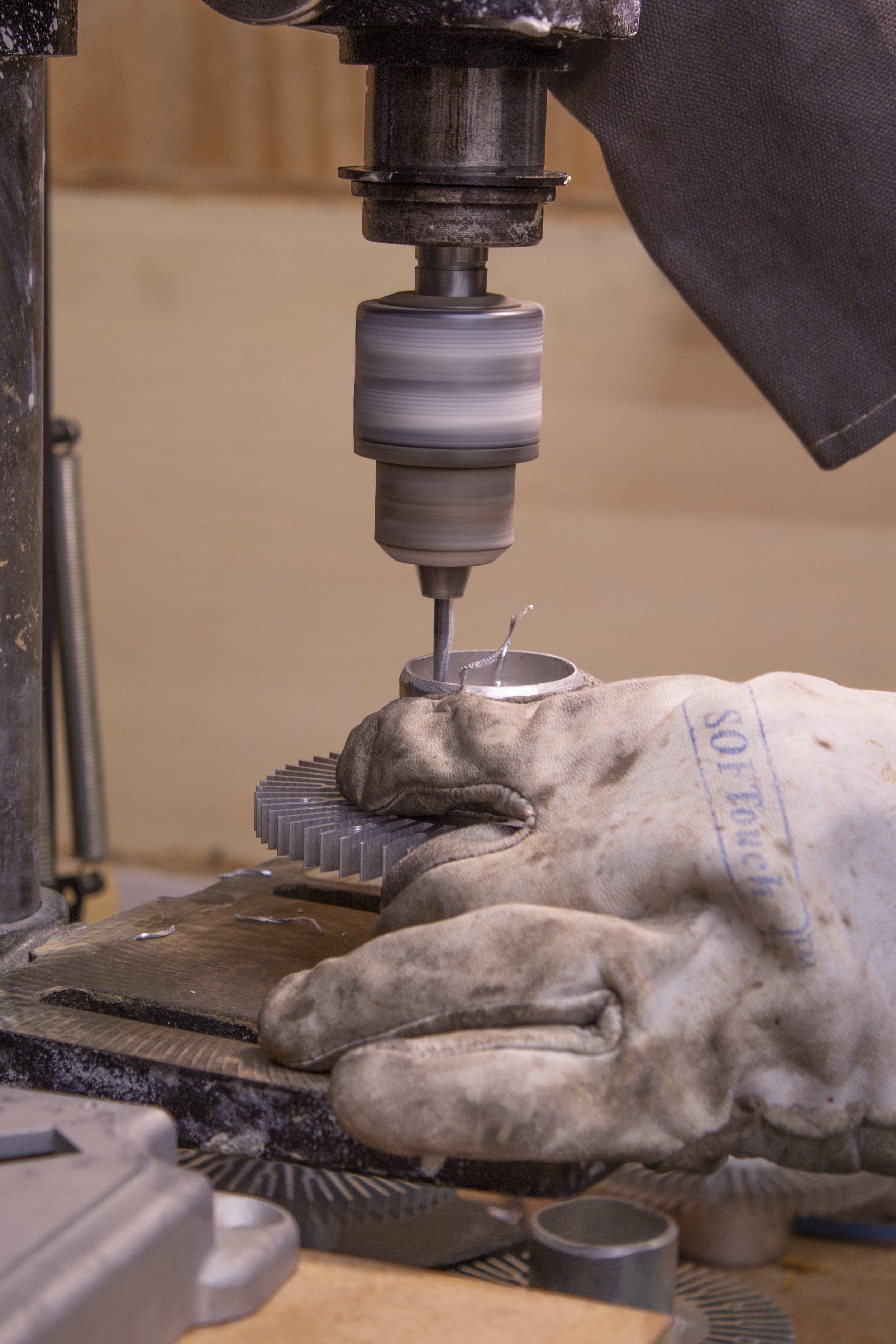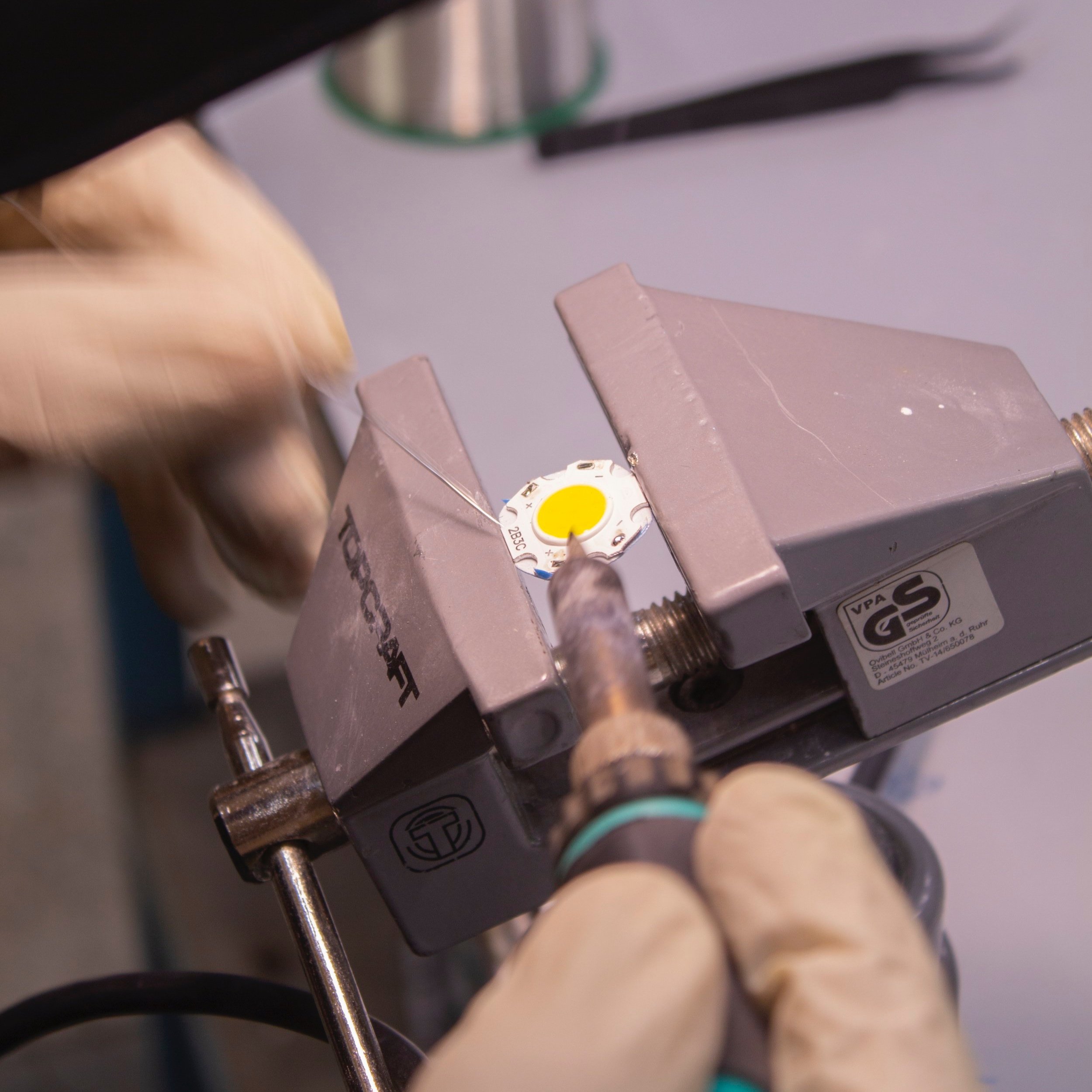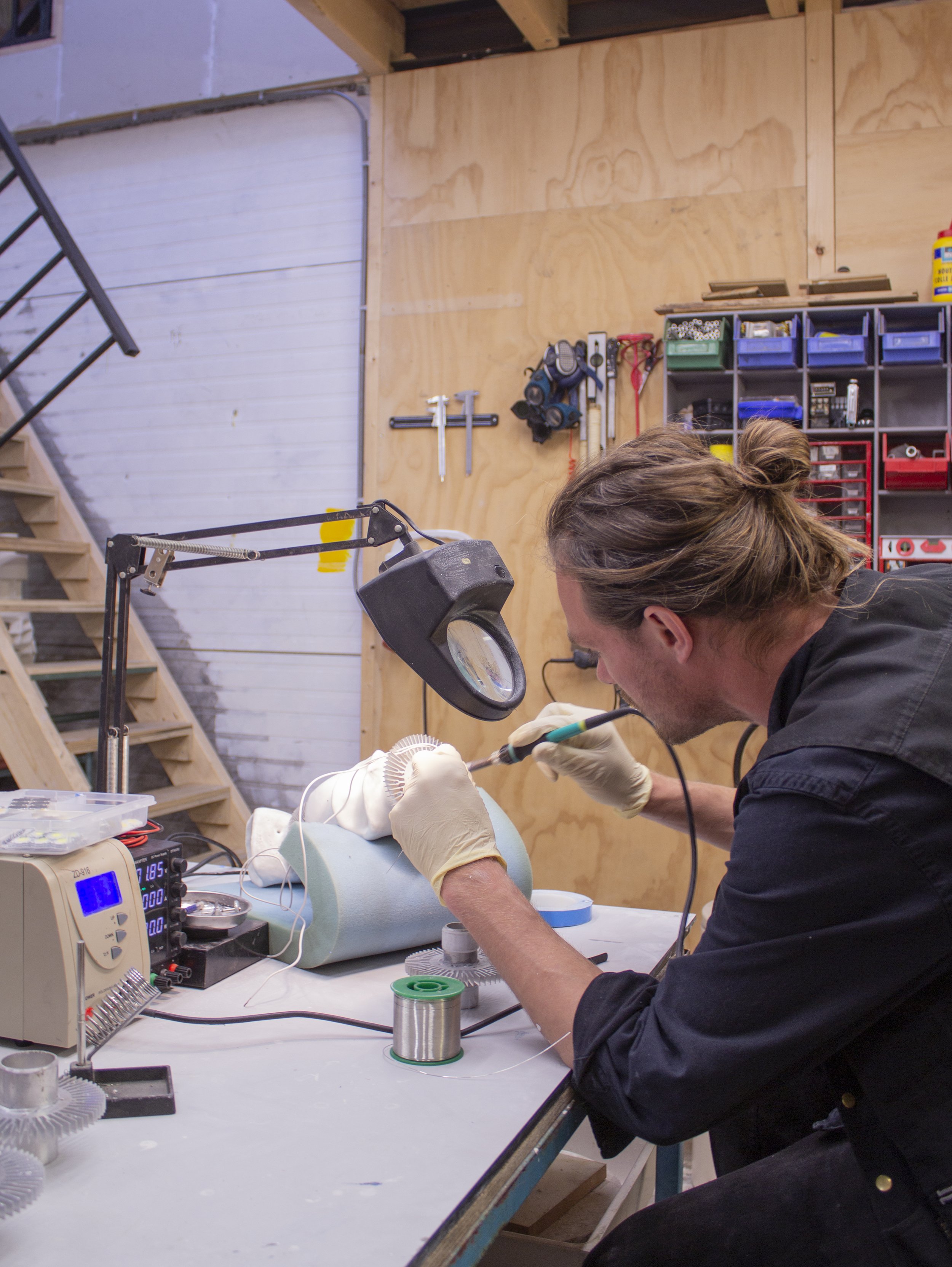A glance into the world of Jochem Esser - Q&A
Jochem Esser is a visual artist who is fascinated by the way in which technology mediates the way we see the world, and the influence of humans in this process. His work forms a dialogue between crafted physical objects and electronic media, altering the viewer experience. Focusing on these different layers creates new meanings and relations between spectators and the installation. His work will be showcased during his solo exhibition from June 26 until August 20.
“I'm fascinated by how we humans are, in a way, conditioned to see the world true through the lens of our own technology.”.
How did your personal connection with art come about?
It started very insignificant. When I was young, I was always dreaming about other worlds. In the beginning, dreaming was enough, but when I got older I had an increasing need to manifest these worlds in my head and bring them out. Without realizing, that world in your head is very safe and vague. The moment you translate that idea in your head into something physical and visual, things become concrete. You have to start making decisions that you didn't consider on the forehand. To me, this is an ambivalent process, where you have to reconcile your ideas with your capabilities. The sweet spot is where the two meet.
When did you realize that you wanted to become an artist?
I actually started leaning more towards design. Therefore, I chose to study information and interactive media Design (IMD) at ArtEZ university of the Arts in Arnhem. I felt compelled to the Scifi-character of this new study that emerged from Graphic design, but after two years I felt a strong urge to work more freely. This resulted in me starting over to do the bachelor of Fine-art at the same art School. I felt that I wanted to approach my work more freely and this was exactly what I could do at fine-art. At the same time, there was already a strong interest in electronic media from the IMD which I kept using in my own work. Where in IMD there was a strong element of problem solving, I found myself more compelled to create an atmosphere at fine-art. This is also when I started to experiment with sound-sculptures. I was fascinated by how the sound could create an acoustic dome that has an influence on how you read the sculpture. I see endless possibilities using this technique and I still find myself exploring it till this day.
What does art mean to you?
For me, art is the celebration of our subjective and illusive experience as a human being. It is what sets us apart from logical machines. I believe it's true that everyone is an artist, because everyone holds necessary fictions about the world and themselves. What separates the artist is the ability to exploit these fictions and have an effect on the people around you. One hard lesson for me is to get rid of the idea of right or wrong. Of course, in everyday life we need a stable reality. This is appealing to our rational side, but in art we can tap into our irrational side. For example, when you like a song you don't like it because the lyrics are necessarily true. Quite the contrary. It's more a bodily reaction. We can explain why we like it afterwards in formal terms, but this is never a process of right or wrong. It's more a process of do you dig it or don’t you.
What elements are essential to your artistic practice?
Something that is recurring in my work is the marriage between two elements; crafted physical objects and electronic media. I think this is an exciting marriage that has a lot of potential in making art. For me, these two elements represent two different movements. The electronic media has a tendency to pull you in. It is almost like hypnosis, when speakers are good, we forget the speakers, if a screen is good, we forget the screen… while the objects are situating the viewer in the space. By sharing the space with the objects, the viewer is in a physical relation with the objects and the space. These two movements create an interplay where the viewer can create new relations and meanings by focusing on different layers in the installation. To me, this is an analogy of two world-views: one of matter and one of waves. A world that appears to be standing still, but is always moving. Or, a world that appears to be moving but is always standing still. Of course I don’t pretend to have an answer to these questions, but that is the fun thing about making art. I don’t have to.
Another important element in my work is art as an analogy for nature and natural systems. I'm fascinated by how we humans are, in a way, conditioned to see the world true through the lens of our own technology. In archaical times we had the archetype of god as a landlord. Later, in more urban times, as an architect. During the industrial revolution we started seeing the world through a mechanical lens. And now in the information-age we start seeing the world as an integrated information system. A computer network that is codependent, like the mycelium is codependent of plants and visa-versa. To me, this says more about how we proceed the world than how the world actually is. I strongly believe that we will always be conditioned to see the world through these arbitrary lenses. In my work I use these analogies of nature as an integrated system and make a data processing garden. A garden is a fascinating concept; a place that looks naturalistic but needs to meet our cultural demands of beauty. In a way, I want my work to have the same contradiction.
What is it that fascinates you about ceramics?
The fascination with ceramics arose the first time I started working with it. In a lot of disciplines you have to deal with measures and metrics. For example; if you are doing woodworking, you are often thinking in terms of measures and performing in accordance with those measurements. The material is very obstructive in the making process and I start creating with this in mind. What I find very distinctive about modeling and working with ceramics is that you just “flow”. Because the clay is so flexible and so forgiving, I don't have to think in advance how the shape will be. I can dance with the material and see where it goes. An important element in my new work is that the moment of making is captured in that vertical form. A record of the moment. A record of the dance I am doing with that material. I have never found a material that can capture that moment as well as clay. Even in a seemingly boundaryless modeling program you are restricted to your screen and it is less likely to have these “happy surprises”.
How did your interest in the digital/technical arise?
I'm a digital native. We were the first generation to have a computer in primary school. As a little kid I already had an attraction to that world. Everything in class did seem so boring back then, but the computer was playful, interactive and technical which attracted me. I still have that attraction to machines and devices. Now, I find it very interesting that in our daily lives almost everything around us is mediated throughout devices. I started to get interested in media critics like Marshall Mcluhan and Jean Baudrilard who both predicted that we would get absorbed in this electronic nervous system. This is something I agree with and try to reflect quite literally in my work by giving it an electronic nervous system.
How would you describe your work process? Is there room for coincidence, or chance?
I prefer to call chance in this case; “natural”. If I can already think of shapes in advance, there is often a clichéd thinking pattern. Humans are programmed to think very purposefully. We are pattern seeking creatures that have a tendency to think in cliched meta-narratives. Working with ceramics enables me to only focus on the patterns. The repetitive method is one dimensional on purpose. The repetition makes it plausible to see patterns of choice. These patterns are non linguistic and therefore don't have any other meaning than the pattern itself. These patterns reflect our natural behaviors in a way. For me this natural pattern is a better self-portrait than any drawing I can make of my face.
To a certain extent this applies to the digital layer as well. It's a natural pattern creation that is not deliberate, nor random. As humans we are situated somewhere between these two. Driving and being driven.
What are you most proud of in your artistic practice?
Pride is something I haven't experienced a lot to be honest. It has to do with the fact that I see all my works as one body of work and that body is still very fragmented. Of course that doesn't mean that i'm not happy with what i made so far, but for now I feel a strong urge to make more and better works. Maybe one day I can look back with pride on the whole endeavor, who knows!
